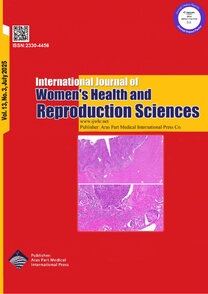Jan 2017, Vol 5, Issue 1
Advanced Search
For Author's & Reviewer's
Poll
How do you find the scientific quality of the published articles on our web site?
| Review | |
| Postmastectomy Pain Syndrome | |
| Solmaz Fakhari1, Simin Atashkhoei2, Hojjat Pourfathi3, Haleh Farzin4, Eissa Bilehjani5 | |
| 1Assistant Professor of Anesthesiology, Fellowship in Palliative Medicine, Tabriz University of Medical Sciences, Tabriz, Iran 2Professor of Anesthesiology, Al-Zahra Hospital, Tabriz University of Medical Sciences, Tabriz, Iran 3Assistant Professor of Anesthesiology, Taleghani Hospital, Tabriz University of Medical Sciences, Tabriz, Iran 4Assistant of Anesthesiology. Tabriz University of Medical Sciences, Tabriz, Iran 5Assistant Professor of Cardiac Anesthesiology, Madani Heart Center, Tabriz University of Medical Sciences, Tabriz, Iran |
|
|
IJWHR 2017; 5: 18-23 Viewed : 5803 times Downloaded : 5354 times. Keywords : Postmastectomy pain, Breast cancer, Neuropathic Pain, Intercostobrachial nerve |
|
| Full Text(PDF) | Related Articles | |
| Abstract | |
Breast cancer, recognized as the common cancer among women, is one of the important causes of morbidity and mortality worldwide. With regard to developments presented in screening, diagnosis, and especially therapies of this disease, survival of patients has improved in recent years, and as a result, the population at risk of complications attributable to treatment has increased, as well. Postmastectomy pain is one of the life-threatening complications of breast cancer. The nature of the mentioned pain is commonly neuropathic with abnormal sensation in intercostal nerve distribution region of upper and lateral parts of thorax, axilla, and medial and posterior parts of arm and shoulder. This pain strongly affects patients? quality of life. At present, the strongest theory about the etiology and mechanism of this phenomenon is related to the neuralgia of intercostobrachial nerve caused by the damage to the nerves after mastectomy. The type of surgery, especially complete axillary dissection (CAD), radiotherapy, chemotherapy, age, pre- and post-operative breast pain, type and size of tumor, all are considered as important risk factors. The best method for prevention and treatment of postmastectomy pain syndrome (PMPS) is multimodal approach. As the best treatment is prevention, may be prevention of this syndrome with consideration of the causative factors, timely resolution of these factors and improvement of surgery techniques could be achieved. Treatment approaches include both pharmacological interventions and non-pharmacological strategies. Pharmacotherapy is the major treatment of cancer-related pains. Intercostal nerve block, radiofrequency pulse, stellate ganglion block, neuromodulation techniques, intrathecal drug delivery, epidural injections of local anesthetic, mastopexy and use of botulinum, complementary and alternative therapies, scrambler therapy, acupuncture, yoga, and music therapy are the novel proposed strategies in this regard. Employing proper treatments can improve patients? quality of life. |
Cite By, Google Scholar
Google Scholar
Articles by Fakhari S
Articles by Atashkhoei S
Articles by Pourfathi H
Articles by Farzin H
Articles by Bilehjani E
PubMed
Articles by Solmaz Fakhari
Articles by Simin Atashkhoei
Articles by Hojjat Pourfathi
Articles by Haleh Farzin
Articles by Eissa Bilehjani
Submit Paper
Online Submission System IJWHR ENDNOTE ® Style
IJWHR ENDNOTE ® Style
 Tutorials
Tutorials
 Publication Charge
Women's Reproductive Health Research Center
About Journal
Publication Charge
Women's Reproductive Health Research Center
About Journal
Online Submission System
 IJWHR ENDNOTE ® Style
IJWHR ENDNOTE ® Style
 Tutorials
Tutorials
 Publication Charge
Women's Reproductive Health Research Center
About Journal
Publication Charge
Women's Reproductive Health Research Center
About Journal
Publication Information
Publisher
Aras Part Medical International Press Editor-in-Chief
Arash Khaki
Mertihan Kurdoglu Deputy Editor
Zafer Akan
Aras Part Medical International Press Editor-in-Chief
Arash Khaki
Mertihan Kurdoglu Deputy Editor
Zafer Akan
Published Article Statistics























